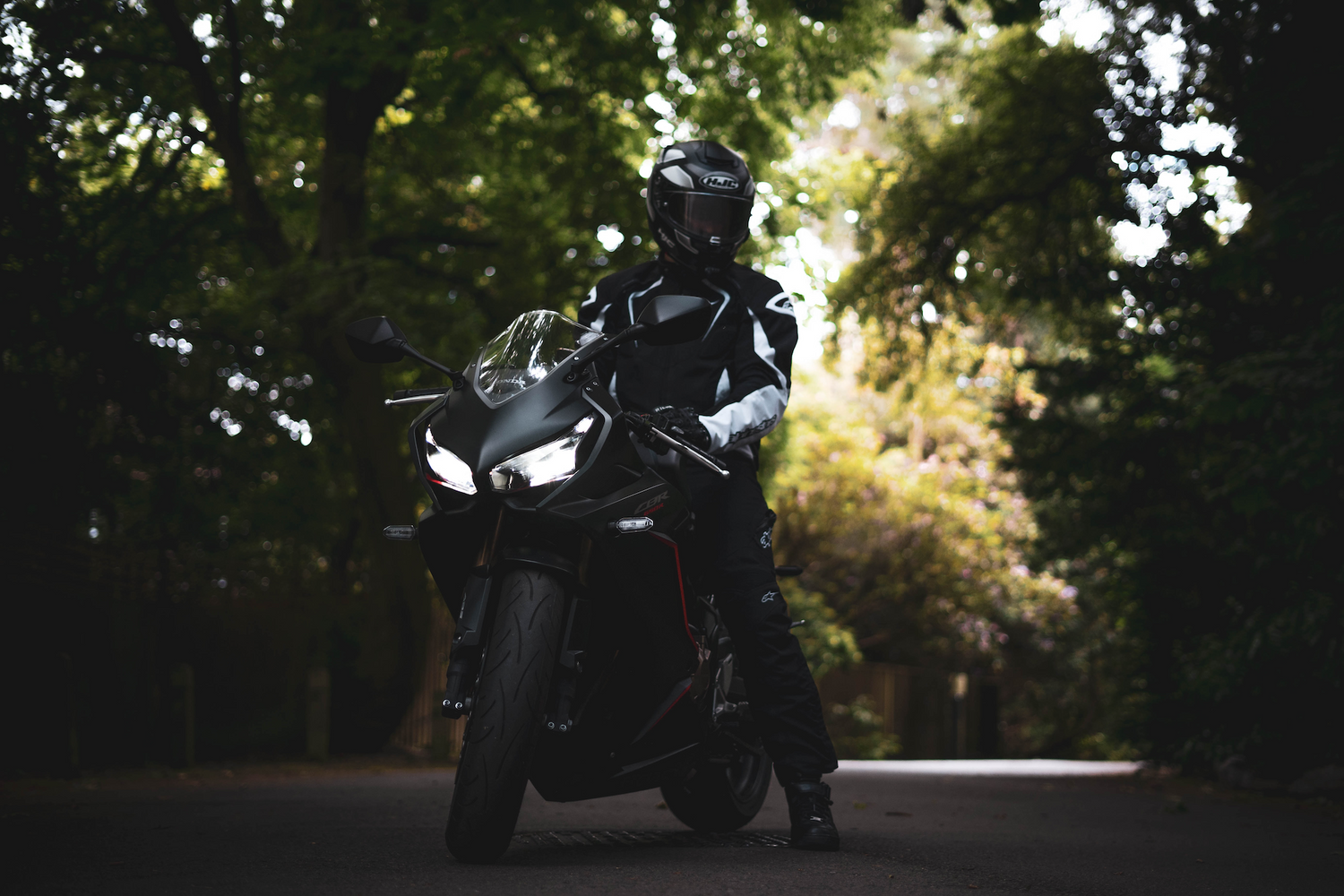This beginner's guide will walk you through the essential motorcycle gear you need before hitting the open road.
Helmet: Your First Line of Defence
A helmet is arguably the most important piece of gear you'll ever buy. In many countries, wearing one is a legal requirement, and for good reason—helmets significantly reduce the risk of head injuries during accidents.
What to Look For:
- Certification: Look for helmets that meet safety standards like DOT (Department of Transportation), ECE (Economic Commission for Europe), or Snell.
- Fit: The helmet should fit snugly but not uncomfortably tight. It shouldn't move when you shake your head.
- Style: Full-face helmets offer the most protection, covering your entire head and face. Modular helmets provide flexibility but might sacrifice some safety.
A well-fitted, high-quality helmet can save your life, so it's worth investing in a good one.
Jacket: Protection and Comfort
Motorcycle jackets are designed to protect you from the elements and provide abrasion resistance in case of a crash. They also come with impact protection at key areas like the shoulders, elbows, and back.
What to Look For:
- Material: Leather and textile are the two main options. Leather offers superior abrasion resistance, but textile jackets often have more breathability and weatherproofing options.
- Armor: Ensure the jacket has built-in armor or pockets for armor inserts.
- Visibility: Look for reflective panels or bright colors for better visibility to other motorists.
A good jacket not only enhances your style but can also prevent severe injuries.
Gloves: Grip and Protection for Your Hands
Your hands are incredibly vulnerable when riding. In the event of a fall, your instinct will be to break your fall with your hands, making gloves a vital part of your gear.
What to Look For:
- Material: Leather is a popular choice due to its durability, but there are many high-quality textile options as well.
- Fit: The gloves should be snug, allowing you to grip the handlebars comfortably. They shouldn't impede movement.
- Protection: Look for gloves with reinforced palms and knuckle guards to protect against impact and abrasion.
Not only do gloves protect you in a crash, but they also shield your hands from the elements, ensuring comfort during long rides.
Pants: Protecting Your Lower Body
While regular jeans might seem adequate, they won't provide much protection in the event of a fall. Motorcycle pants, on the other hand, are designed with abrasion resistance and impact protection in mind.
What to Look For:
- Material: Like jackets, pants come in leather or textile options. Kevlar-reinforced jeans are a good compromise if you prefer a casual look but want more protection.
- Armor: Look for pants with built-in knee and hip protection.
- Fit: Ensure the pants are comfortable to wear both on and off the bike. Some pants come with removable thermal or waterproof liners for added versatility.
Investing in good pants can prevent painful road rash and more severe leg injuries.

Boots: Ankle and Foot Protection
Motorcycle boots are designed to protect your feet, ankles, and lower legs from injury, as well as provide grip and control on the bike. A sturdy pair of boots can be the difference between a minor scrape and a serious injury.
What to Look For:
- Material: Leather or synthetic materials with reinforcement in key areas (like toes, ankles, and shins) are ideal.
- Sole: A good, non-slip sole is essential for maintaining control over your bike.
- Fit: The boots should cover your ankles and offer a snug fit to prevent them from coming off in the event of an accident.
Riding boots provide necessary protection while also offering grip and support for controlling your motorcycle.
Additional Gear for Safety and Comfort
While the essentials above are must-haves, there are a few additional items that can enhance both safety and comfort:
- Back Protector: Some jackets come with built-in back protection, but if not, you can buy standalone back protectors.
- Rain Gear: Waterproof jackets, pants, and gloves will keep you dry and comfortable when riding in wet conditions.
- Earplugs: Wind noise can be damaging to your hearing over time, so wearing earplugs on long rides is a good idea.
As a beginner, it can be tempting to cut corners on gear, but this is not an area where you should compromise. High-quality motorcycle gear is a crucial investment in your safety and comfort on the road. By equipping yourself with the right helmet, jacket, gloves, pants, and boots, you’ll not only protect yourself but also increase your confidence and enjoyment as a rider.
Remember, riding safe starts with gearing up smart!




